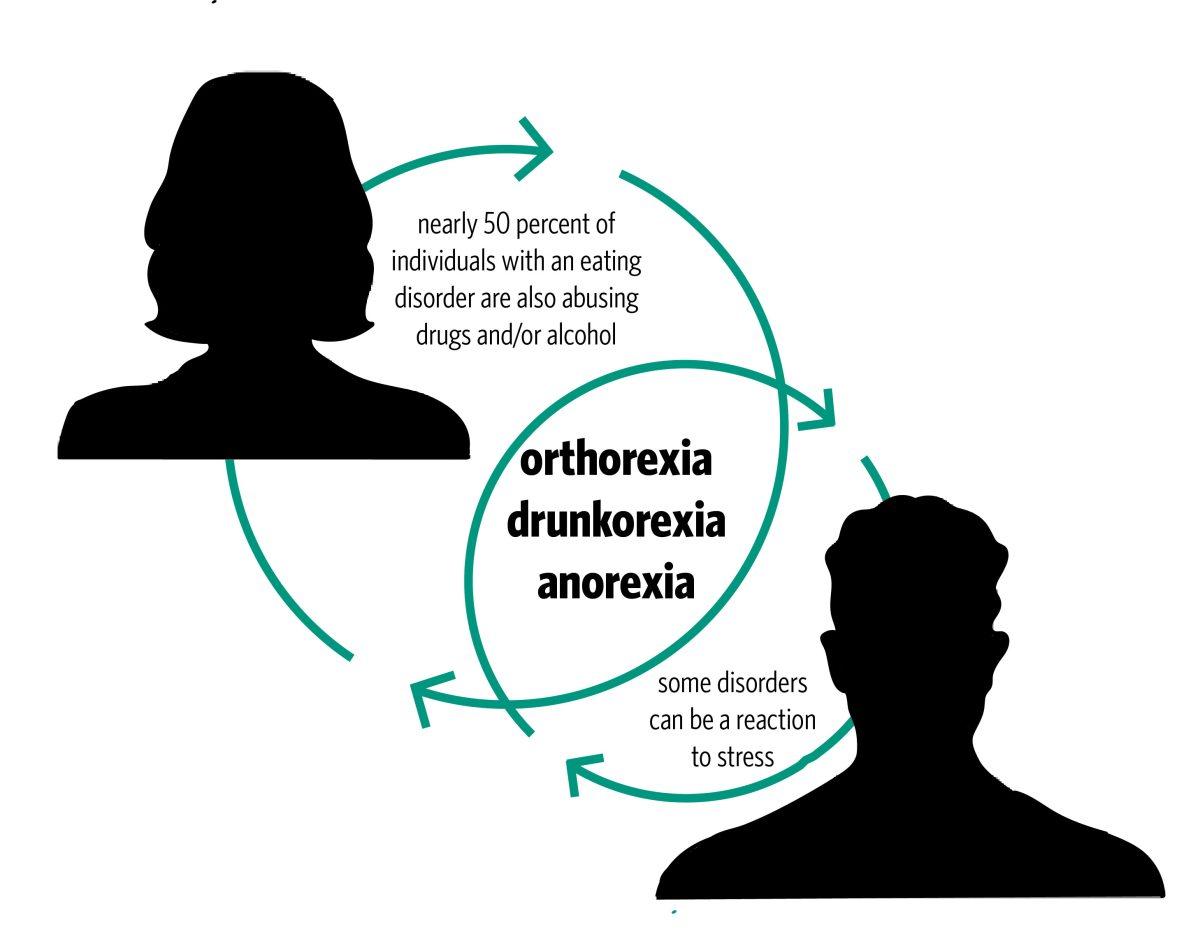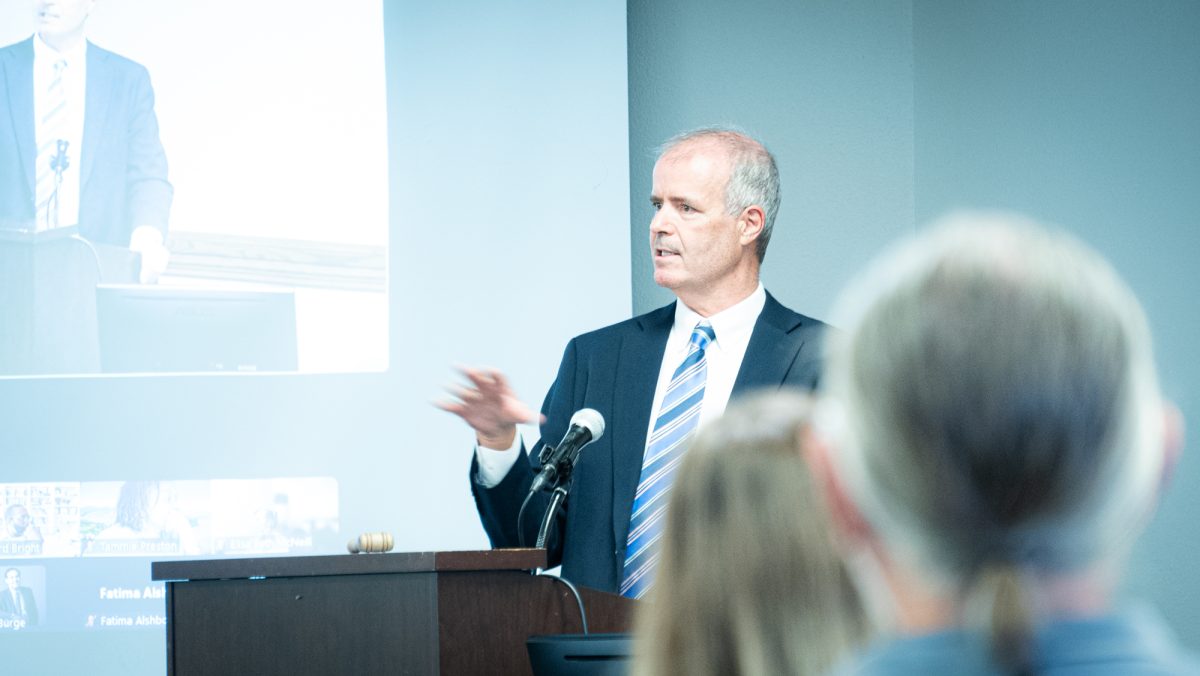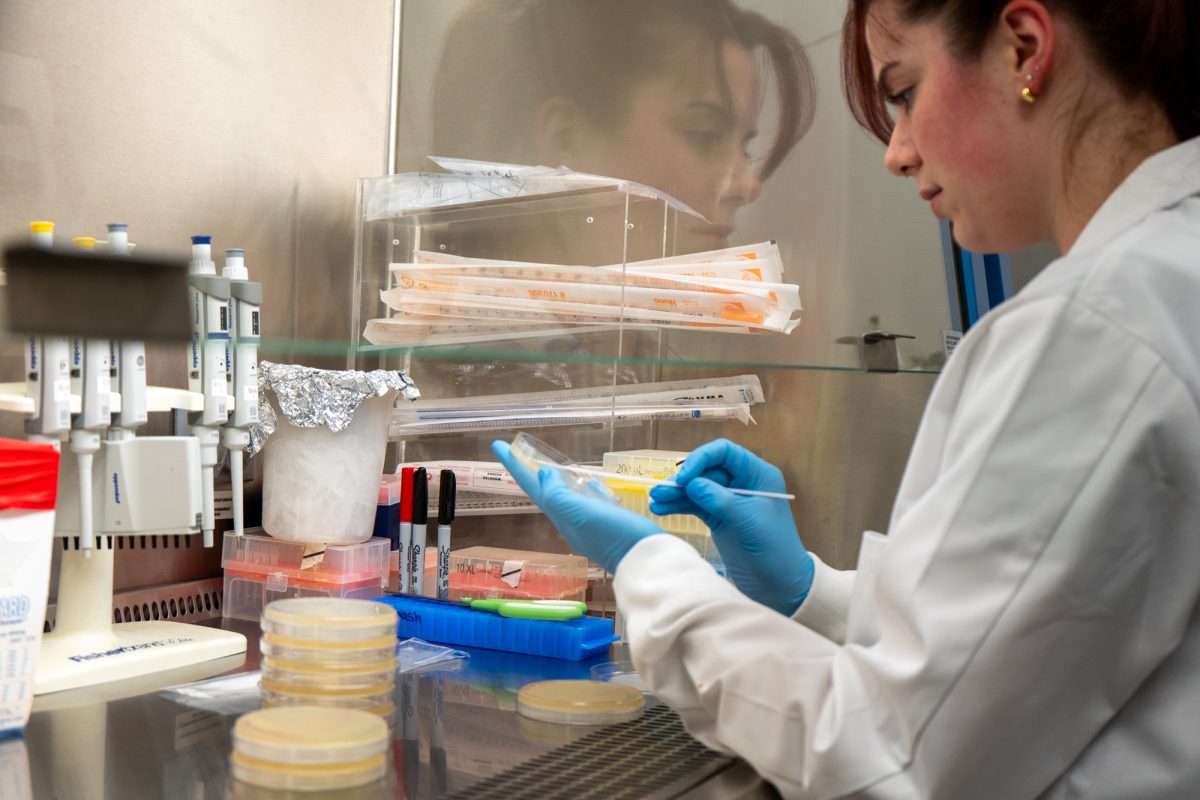One person dies every hour due to eating disorders — the highest mortality rate of all mental illnesses — yet only one-third of people with eating disorders receive treatment, according the Eating Recovery Center (ERC).
For experts at the ERC, an international center that works in conjunction with university counseling services, these facts have motivated staff psychologists to take action against eating disorders among college students.
The treatment center launched a new Virtual Intensive Outpatient Program (VIOP) this year that allows students struggling with eating disorders to receive treatment wherever they have internet access.
“[It’s] great for students at campuses like A&M where there’s not centers near you, so that you can get the treatment that you need earlier in the disease, or for coming back from higher levels of care to make recovery a more seamless process,” Casey Tallent, national collegiate outreach director for Eating Recovery Center said.
Psychologists have seen growth in new types of eating disorders, among college students: Drunkorexia, the reverse ‘freshman 15’ and orthorexia, according to Tallent.
“The term drunkorexia was coined about 10 years ago,” Tallent said. “It’s kind of a pop culture term. We see it like any other pop culture term, it kind of rises and falls in popularity. It refers to the process of somebody restricting calories prior to binge drinking, and the unfortunate piece is that we see that as a red flag both for eating disorders and substance abuse issues.”
Research from the ERC suggests that nearly 50 percent of individuals with an eating disorder are also abusing drugs and or alcohol, often as a mechanism to deal with stress.
“What we see with substance abuse disorders and eating disorders is that they really become this ultimate coping method for stressors,” Tallent said. “So you may see someone with an eating disorder who utilizes the eating disorder to cope with any emotion that comes up. We see the same thing with substance abuse where that becomes the method of coping. Someone is stressed for an exam and so somebody binge drinks and we see the same process.”
The relatively new terms, reverse freshman 15 and orthorexia, refer to a fixation on healthy eating or exercising that becomes so influential in a student’s life, their overall health begins to suffer.
“When we’re talking about orthorexia, we are kind of talking about an obsession with health gone bad,” Tallent said. “So what we see with orthorexia is that those patterns become more and more restrictive. And somebody may start with very well intentions, like with being gluten free or vegan and then we see that restriction continue and continue until they’re having malnutrition or the same medical complications we see with anorexia. And similarly with exercise — over-exercising can be incredibly dangerous and can cause the same physical issues that we see in anorexia as well.”
Although it may be confusing that students focusing on being healthy can become unhealthy in the process, Tallent said there are certain warning signs other students can observe.
“To differentiate between orthorexia and ‘normal patterns’ of eating and exercise, we are really looking at if those behaviors have taken over someone’s life,” Tallent said. “People maybe aren’t attending meals, family get togethers, maybe they’re struggling academically. These are all signs someone may be taking things too far.”
According to Tallent, people with eating disorders suffer in silence due to a negative stigma, which she attributes to pop culture.
“Unfortunately, eating disorders have been misunderstood for a long time and so people don’t understand the severity of eating disorders,” Tallent said. “So there’s certainly this fear, but unfortunately in our culture we often times make jokes about dieting and eating disorders, which are not joking matters.”
For Zach Galiano, business freshman, the topic of eating disorders hits close to home.
“I have a close friend who just told us [about it],” Galiano said. “I was pretty shocked, because her parents wouldn’t let her go to her college [of] choice because they didn’t trust her with her eating disorder. I didn’t know it was that bad. There weren’t any warning signs that she struggled with it. Now that she’s told me, I can tell, but over time I never knew.”
As science and research shed light on the causes of eating disorders, there is a possibility the disorders can be prevented sooner in an adolescent’s life.
“Indirectly, research on the genetics of eating disorders has already made a considerable contribution to eating disorder treatment,” Stephanie Zerwas, Department of Psychiatry at the University of North Carolina, Chapel Hill, in the U.S. National Institutes of Health’s National Library of Medicine said. “The re-examination of the role of the family in eating disorder liability has ushered in a new era of eating disorder clinical practice.”
Along with increases in research to combat eating disorders, Tallent said she has also seen increases in the public’s understanding of the disorders.
“There was recently a campaign — Amazon had a shirt kind of making fun of eating disorders and so there was a national campaign to take it down,” Tallent said. “I think advocates are doing a lot of work and experts are doing a lot of work to make it easier for people to come in and recognize they have an eating disorder and get the help that they need.”
Recognizing a spectrum of various eating disorders
November 8, 2017
0
Donate to The Battalion
Your donation will support the student journalists of Texas A&M University - College Station. Your contribution will allow us to purchase equipment and cover our annual website hosting costs.









